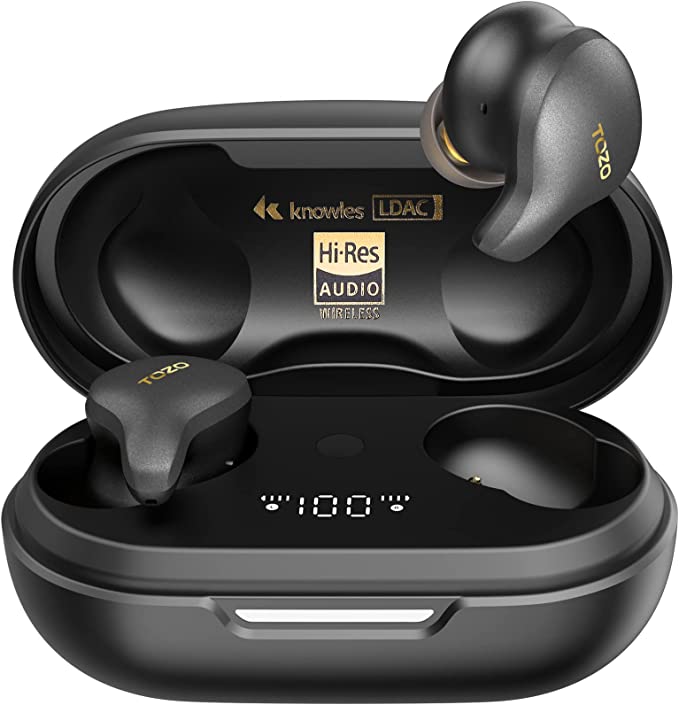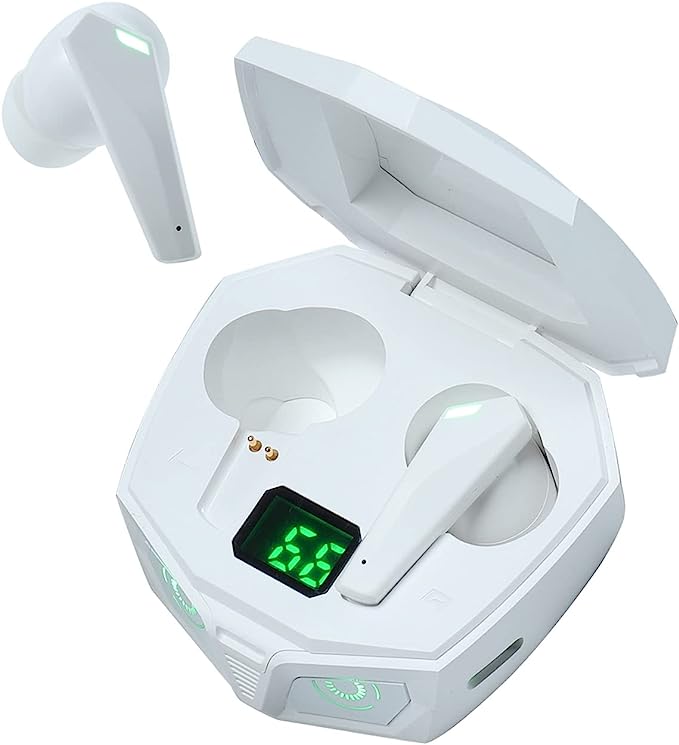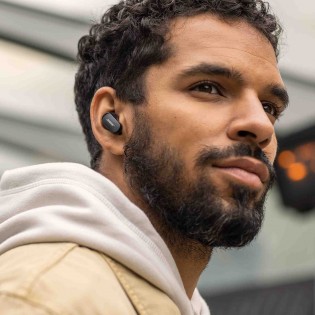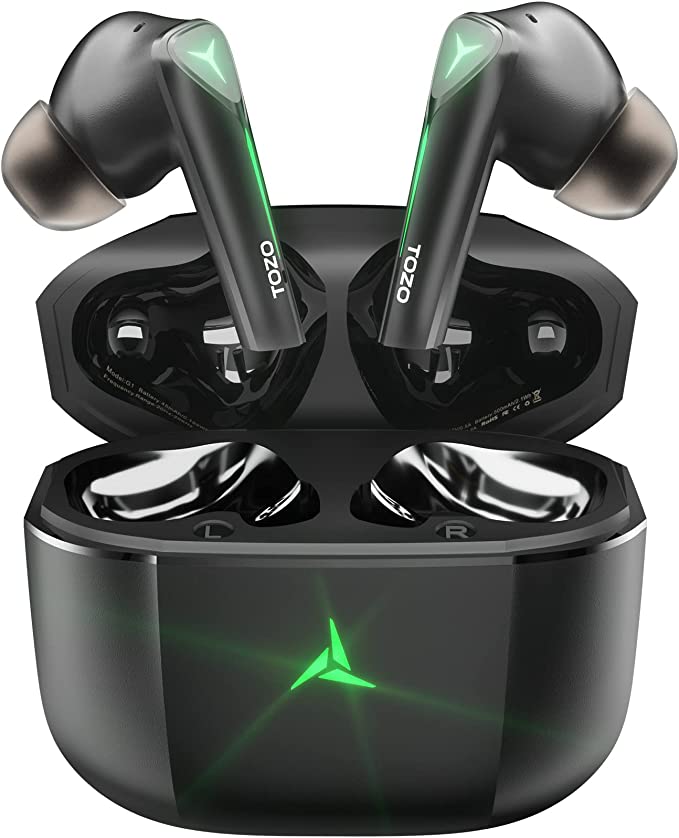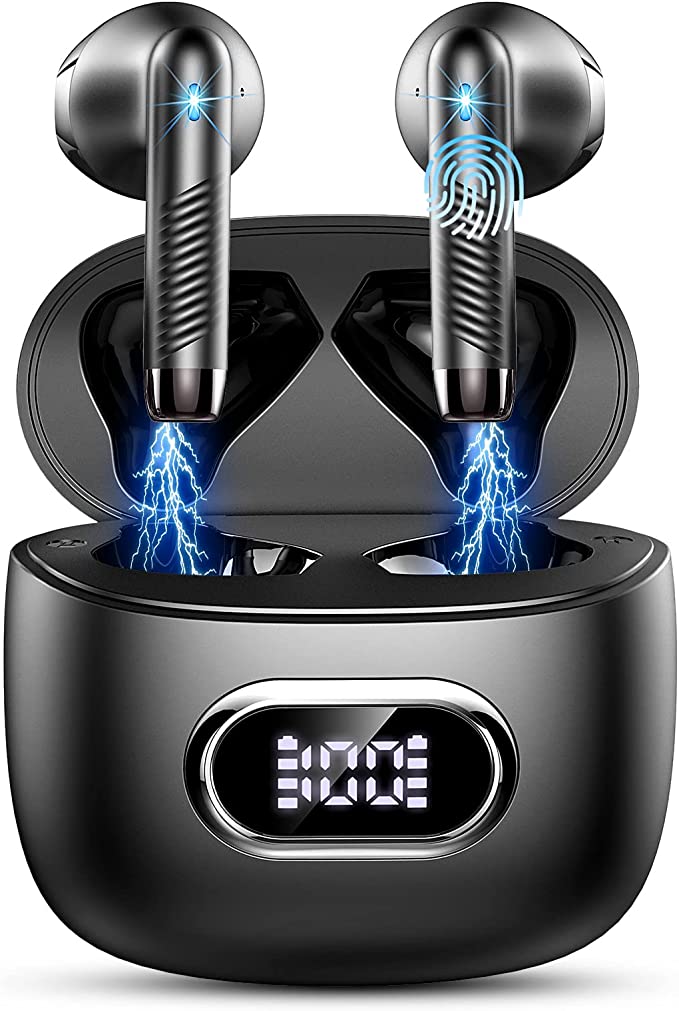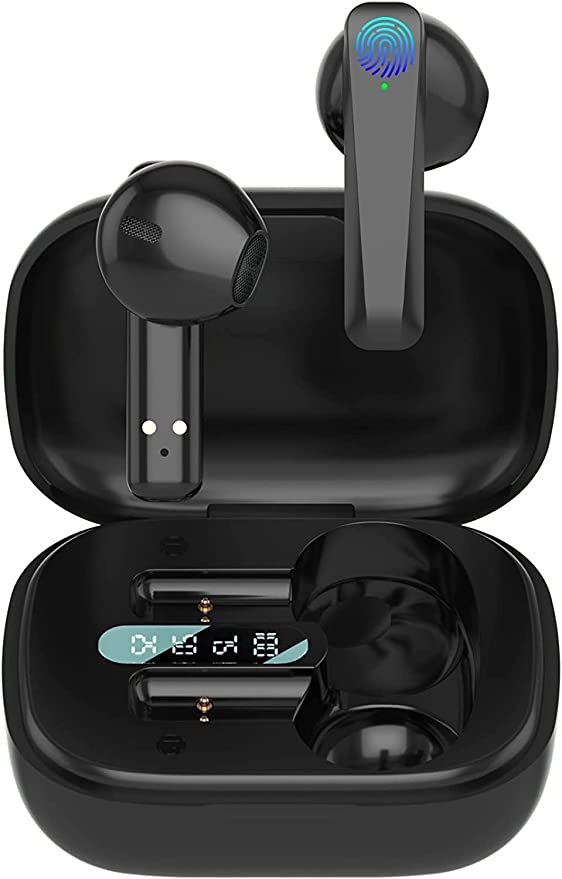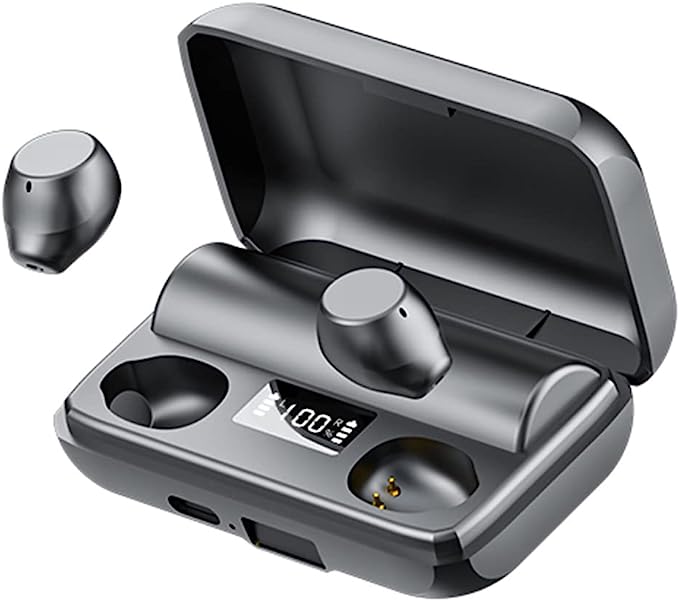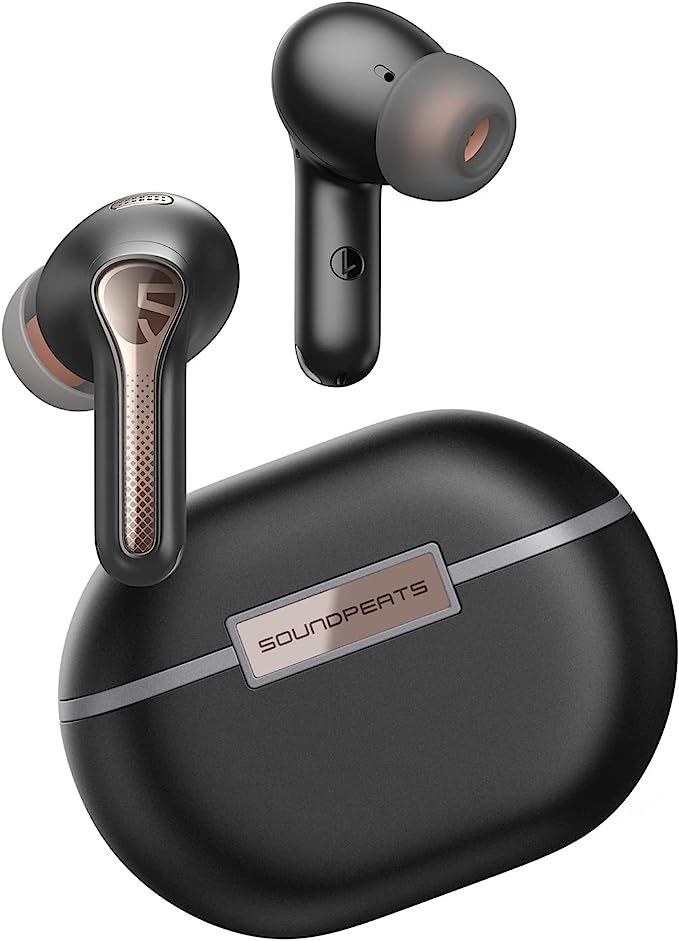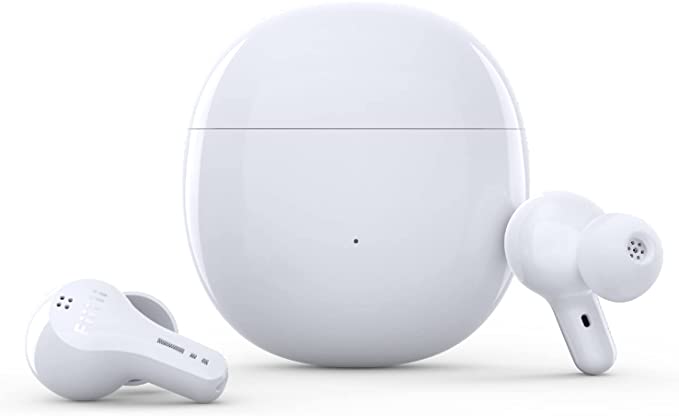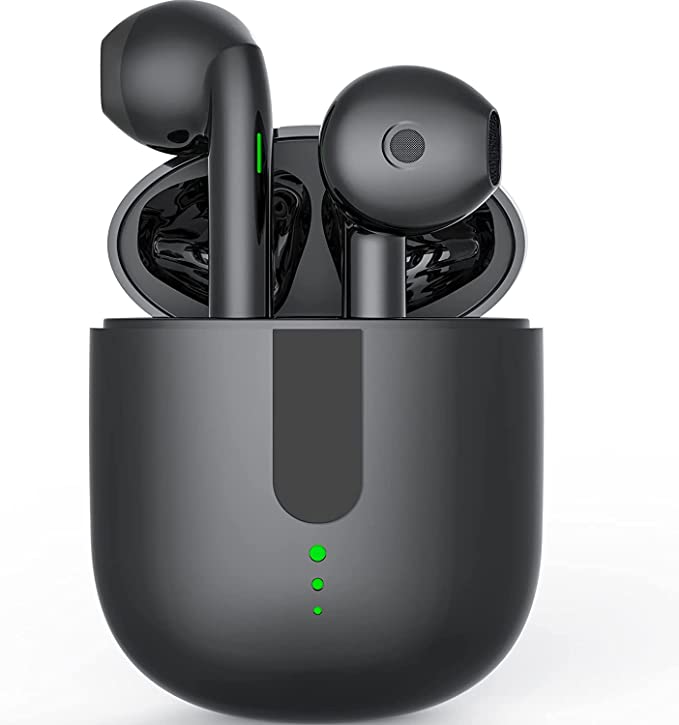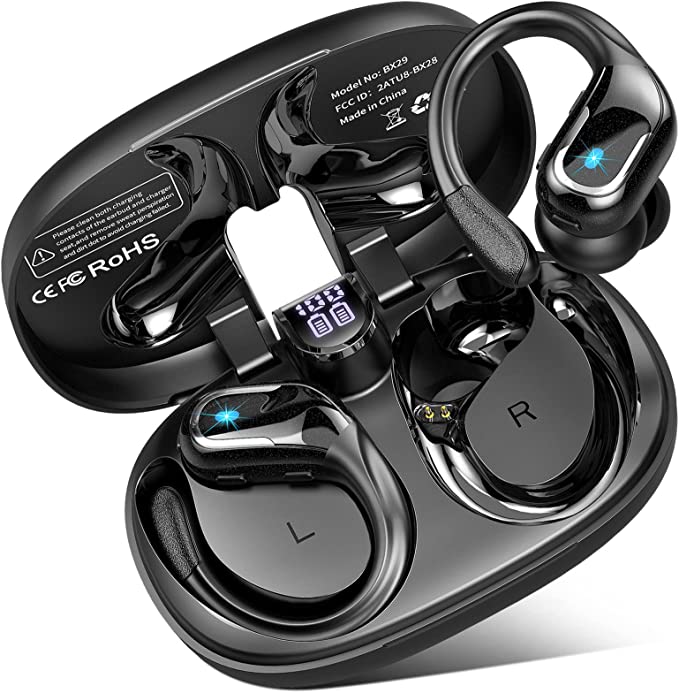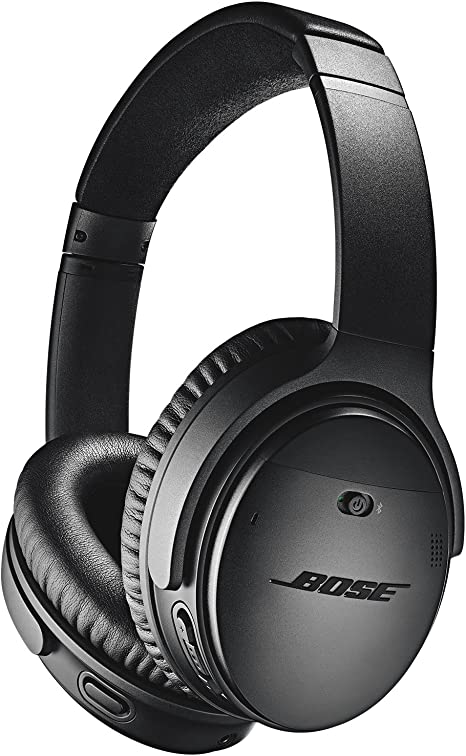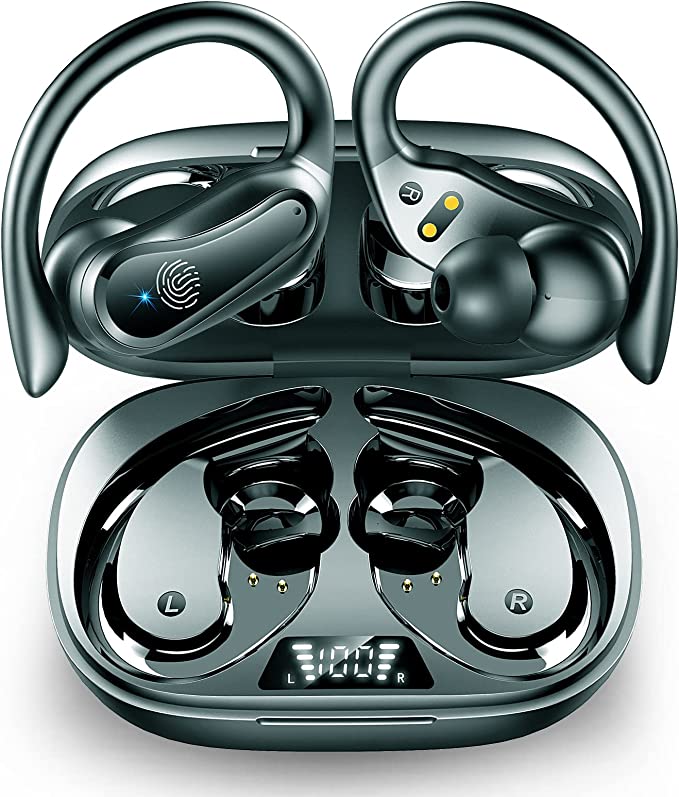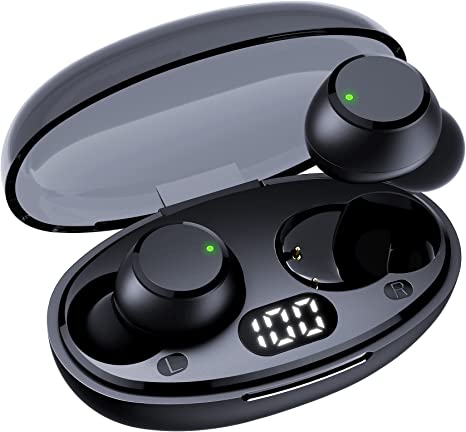TOZO NC9 Wireless Earbuds: Experience Silence with Advanced Noise Cancellation
Update on Feb. 19, 2025, 12:47 p.m.
Imagine you’re on a crowded bus, the engine rumbling, passengers chattering, the city’s cacophony pressing in. You long for a moment of peace, a chance to escape the auditory onslaught and focus on your music, podcast, or simply your own thoughts. This desire for control over our sonic environment is at the heart of active noise cancellation (ANC) technology, a remarkable feat of engineering that’s transforming how we experience sound. The TOZO NC9 wireless earbuds are a prime example of how far this technology has come, offering a sophisticated and accessible way to create your own personal oasis of calm.

Sound Waves 101: The Building Blocks of Audio
Before we delve into the intricacies of ANC, let’s take a step back and understand the fundamentals of sound. Sound, in its essence, is vibration. When an object vibrates – a guitar string, a vocal cord, a loudspeaker – it creates pressure waves that travel through a medium, typically air. These waves reach our ears, where they’re interpreted as sound.
These sound waves have two crucial characteristics: frequency and amplitude. Frequency refers to the number of waves that pass a given point per second, measured in Hertz (Hz). The higher the frequency, the higher the perceived pitch of the sound. Amplitude, on the other hand, refers to the height of the wave, which corresponds to the loudness of the sound. We measure loudness in decibels (dB). The human ear is a remarkably sensitive instrument, capable of detecting sounds ranging from a quiet 20 Hz (a low rumble) to a high-pitched 20,000 Hz (20 kHz).

From Airplanes to Earbuds: A Brief History of Noise Cancellation
The quest to control sound isn’t new. The earliest practical application of noise cancellation technology emerged in the 1930s, driven by the need to protect pilots from the deafening roar of aircraft engines. Dr. Paul Lueg, a German physicist, is often credited with first patent about the principle of active noise cancellation using destructive interference. These early systems were bulky and rudimentary, but they laid the groundwork for the sophisticated technology we have today.
The technology continued to evolve, primarily for military and aviation applications. It wasn’t until the late 20th century that ANC began to make its way into consumer electronics. The first commercial ANC headphones were expensive and primarily targeted at frequent flyers. But as technology advanced and costs came down, ANC became increasingly accessible, eventually finding its way into the compact and convenient form factor of wireless earbuds, like the TOZO NC9.

The Magic of Destructive Interference: How ANC Works
The core principle behind ANC is a phenomenon called destructive interference. Imagine two identical waves traveling towards each other. If they meet in perfect alignment – crest to crest and trough to trough – they reinforce each other, resulting in a larger wave (constructive interference). But if they meet out of phase – crest to trough – they cancel each other out.
ANC systems exploit this principle by generating an “anti-noise” wave that is precisely the opposite of the incoming noise wave. This anti-noise wave is 180 degrees out of phase with the unwanted sound. When these two waves meet, they effectively neutralize each other, significantly reducing the perceived noise level. This isn’t about simply blocking sound, like earplugs; it’s about actively erasing it.
Think of it like this: imagine you’re trying to smooth out ripples on a pond. You could try to block the ripples with a barrier, but that would only work to a limited extent. A more effective approach would be to create your own ripples, timed perfectly to counteract the existing ones. This is essentially what ANC does with sound waves.
Feedforward, Feedback, and Hybrid: The Different Flavors of ANC
There are three primary types of ANC systems:
- Feedforward ANC: This system uses microphones placed on the outside of the ear cup or earbud to “listen” to the ambient noise. The system then processes this noise and generates an anti-noise signal before the sound reaches your ear. Feedforward ANC is generally effective at cancelling out constant, predictable noises, like the drone of an airplane engine.
- Feedback ANC: This system uses microphones placed inside the ear cup or earbud, close to the ear. These microphones monitor the sound that actually reaches your ear, allowing the system to adjust the anti-noise signal in real-time. Feedback ANC is better at handling unpredictable noises and variations in the fit of the headphones.
- Hybrid ANC: As the name suggests, this system combines both feedforward and feedback ANC. It uses both external and internal microphones to capture a more complete picture of the noise environment, resulting in more effective and versatile noise cancellation.
The TOZO NC9 utilizes a sophisticated Hybrid 3-layer Active Noise Cancellation system. This means it employs both external and internal microphones, combined with the passive noise isolation provided by the ear tips, to achieve a high level of noise reduction across a wide range of frequencies.

Beyond Silence: Key TOZO NC9 Components and Features
The TOZO NC9 isn’t just about noise cancellation; it’s a complete audio package. Let’s explore some of its other key features:
 * Bluetooth 5.3: This latest version of Bluetooth offers several advantages over previous generations. It provides a more stable and reliable connection, reducing dropouts and interference. It also boasts increased range and improved power efficiency, contributing to longer battery life.
* Bluetooth 5.3: This latest version of Bluetooth offers several advantages over previous generations. It provides a more stable and reliable connection, reducing dropouts and interference. It also boasts increased range and improved power efficiency, contributing to longer battery life.
-
Transparency Mode: While ANC is designed to block out noise, there are times when you need to be aware of your surroundings. Transparency Mode uses the external microphones to amplify ambient sounds, allowing you to hear conversations, traffic, or announcements without removing your earbuds. This is a crucial safety feature and adds to the versatility of the NC9.
-
Battery Life: The TOZO NC9 offers impressive battery life, providing over 13 hours of playtime with ANC off and over 7 hours with ANC on. The included charging case extends this significantly, providing an additional 27 hours of power. Keep in mind that battery life can vary depending on factors like volume level and the intensity of the ANC being used.
-
IPX6 Waterproof Rating: The “IP” in IPX6 stands for “Ingress Protection.” This rating indicates the level of protection against solids (like dust) and liquids. The “X” means the device hasn’t been tested for dust protection, while the “6” signifies that it can withstand powerful water jets. This makes the TOZO NC9 suitable for workouts, outdoor activities, and use in rainy conditions.
-
Microphones: The NC9 features a dual-microphone system with one internal and two external microphones. These microphones serve two crucial purposes. First, they are essential for the ANC system, capturing both external and internal noise. Second, they enable clear voice calls by isolating your voice and suppressing background noise. The NC9 is using silicon microphone, which offer several advantages over traditional electret condenser microphones (ECMs). They are more durable, consume less power, and have a smaller footprint, making them ideal for compact devices like earbuds.
-
Impedance and Sensitivity: Impedance, measured in Ohms (32 Ohm for the NC9), indicates how much resistance the earbuds present to the electrical signal from your device. A lower impedance generally means the earbuds are easier to drive and can achieve higher volumes with less power. Sensitivity, measured in decibels (101 dB for the NC9), indicates how loud the earbuds will play for a given input power. Higher sensitivity means the earbuds can produce louder sound with the same amount of power.

The Human Factor: Comfort, Fit, and the “Pressure” Sensation
The effectiveness of ANC is heavily dependent on the fit of the earbuds. A good seal between the ear tip and the ear canal is crucial for both passive noise isolation and for the proper functioning of the feedback ANC system. The TOZO NC9 addresses this by including six different sizes of ear tips, allowing users to find the perfect fit for their ears.
Some users report a slight “pressure” sensation when using ANC headphones or earbuds. This is due to the changes in air pressure created by the noise-canceling process. While not harmful, it can be uncomfortable for some. The TOZO NC9’s design and the ability to fine-tune the fit with different ear tips help to minimize this sensation. Additionally, gradually acclimating to ANC by using it for shorter periods initially can help your ears adjust.

The Future is Quiet: Emerging Trends in Noise Cancellation
ANC technology is constantly evolving. Researchers and engineers are exploring new ways to improve noise cancellation performance, reduce power consumption, and enhance the overall listening experience. Some exciting trends include:
- AI-Powered ANC: Artificial intelligence is being used to develop more adaptive and personalized ANC systems. These systems can learn your preferences and adjust the noise cancellation based on your environment and activity.
- Personalized Sound Profiles: Future ANC systems may be able to tailor the sound output to your individual hearing characteristics, creating a truly customized listening experience.
- Bone Conduction Integration: Combining ANC with bone conduction technology could allow for even more effective noise cancellation while still allowing users to hear important external sounds.

Conclusion: Embracing the Power of Silence
Active noise cancellation is more than just a technological marvel; it’s a tool that can enhance our well-being, improve our focus, and allow us to fully appreciate the sounds we want to hear. The TOZO NC9 wireless earbuds, with their sophisticated hybrid ANC system and array of other features, represent a significant step forward in making this technology accessible and enjoyable for everyone. By understanding the science behind the silence, we can better appreciate the power and potential of this transformative technology.
